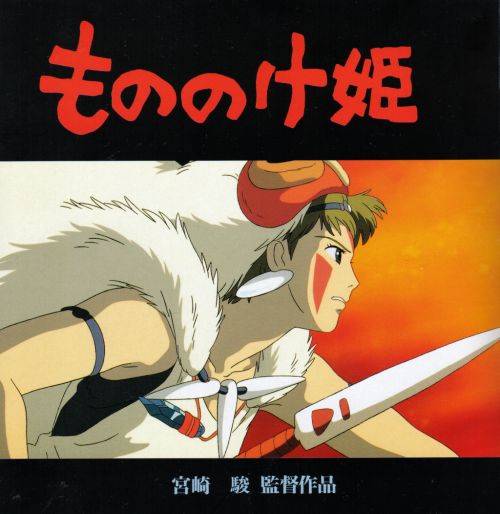Princess Mononoke (Mononoke Hime)

I've seen a number of people do reviews of anime that they've watched, and I've enjoyed taking a look at them myself. To follow along in this little idea, I've decided to do a semi-review of my favorite Hayao Miyazaki movie: もののけ姫, created through Studio Ghibli of course.

The story is centered around Ashitaka, a young man who seeks the source of a curse that was placed on him by a demon in hopes of finding a cure. He ends up in a place where Gods still roam the earth, and where spirits protect the forest.

Enter San, known in human myth as Princess Mononoke - the human child whose soul was captured by the wolf Goddess Moro and who now lives to protect the forest. San and her wolf brothers are at odds with the people of Iron Town, who are intent on destroying the forest to mine the iron ore out of the sand.

San and Ashitaka's path are interwoven together, Ashitaka finding the source of the demon in San's forest while at the same time finding a temporary sanctuary in Iron Town. The two represent their respective races (Gods and humans), as they clash and try to find a solution to their problems. Between roving samurai, a not-so-good monk seeking a mountain of gold, boar Gods from another region looking for revenge, a war fought on three sides, and a plot to take the head of the Forest Spirit for immortality unrolling, it's easy to see that even the opening scene of Princess Mononoke is packed with plot-moving events.

As far as the English voice-acting is concerned, I was pretty satisfied personally. Moro has a wonderful voice, though Ashitaka sometimes comes off as being a little dry. This, however, flows well with the original Japanese voice-acting as Ashitaka is supposed to be rather dry - I'd be bitter about it all, too, if I was dying. I will say that I'm more partial to the English voice-acting for Moro than the original Japanese one, simply because the English voice-acting throws in a little more flourish for the wolf Goddess.

Miyazaki weaves a beautiful, entrancing story through fantastic cinematic landscapes and unique character designs. Beyond the aesthetic appeal to the entire piece, there is a strong commentary underlying the movie about society. True to form, this Miyazaki film does not end with sunshine and flowers, but carries its strong message across with a true-to-life closing. The expert weaving of mythology to morals and ethics, blended with the appealing visuals creates an excellent movie.

If you ever get the opportunity, I highly suggest watching Princess Mononoke. It's a fantastic film, and definitely my favorite Miyazaki work.



4 件のコメント:
It's also, unfortunately, one of his least well-known, at least on these shores. Lots of people who are familiar with "Spirited Away" and "Howl's Moving Castle" know nothing of "Princess Mononoke," though it every bit deserves to stand alongside those titles.
I'll echo かっぱさん and suggest this movie to anyone who hasn't seen it.
What a shame, I haven't seen this movie.
I should find some time to watch it. Maybe a Miyazaki marathon. That'd be fun :D
I think that it would be fun for all of us to get together and watch some Miyazaki movies. Munford Classroom(to lazy to form katakana)はどうですか。 It would be very convenient since 2 of us live at the IRC.
We should definitely get a group together one weekend and do a Miyazaki marathon - but perhaps that should wait until we're all thoroughly out of midterms first?
I hadn't known it was one of the least well known ones, but I guess that makes sense considering it wasn't released in the U.S. to the big screen.
コメントを投稿